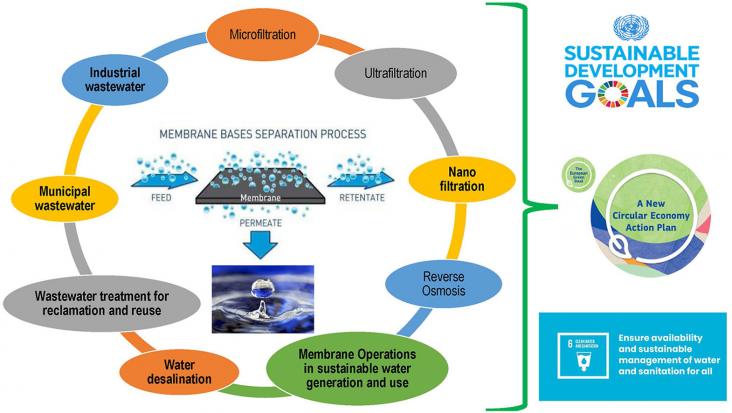Studies on the distribution of microplastics in aquatic environments are summarized and environmental and anthropogenic factors affecting microplastic toxicity are reviewed
This study analyses spatial distribution of water reservoirs in the Sota catchment with regards to livestock density, population density, rainfall distribution and geological structure of the Sota catchment, and assessed the state of these reservoirs.
Results of ultrafiltration (UF) and reverse osmosis (RO) pilot plant on-site tests for wastewater reclamation are reported here with 90% and 65% water recovery achieved for UF and RO stages, respectively. RO achieved high quality requirements for industrial reuse supporting SDG 6.
Over 43 million U.S. residents rely on private unregulated wells for their drinking water, raising public health concerns, particularly in regions like northern New England where widespread groundwater arsenic contamination is now recognized. Children are particularly vulnerable to adverse health effects from arsenic exposure.
Nuclear desalination is an important non-electric application of nuclear power and heat, having strong interlinkages and alignment with sustainable development, climate change management (both mitigation and adaptation), and water security.
An examination of the challenges involved in water demand forecasting, with a particular focus on the impact of COVID-19 on the performance of various machine learning models designed for this purpose.

Clean water resources are crucial for societies in order to maintain safety as well as social, ecological and economic progress. As the population grows, agricultural, domestic and industrial activities produce large amounts of wastewaters that can be treated and reused in variety of purposes considering circular economy philosophy. This review presents the challenges and future prospects of wastewater treatment using membrane technologies and is related to SDG 6: Clean water and sanitation.
This study provides new insight into the evolution of influx assessment employing concurrent sampling in large-sized rivers.
This chapter advances UN SDG goals 7 and 13 by critically evaluating the current status of waste-to-energy (WtE) processes to determine how best to move forward from a few successful WtE demonstrations to commercial-scale processes.
Drug resistance became widely recognized global threats in last two decades. Knowledge of drug resistance, development of new vaccines and medicines, public awareness program, government support (policies and incentive), development of new diagnostic tool, industrial support in medical research are the need of the hour that will help the mankind to fight back and deal with drug resistance and helps to support SDG3.
